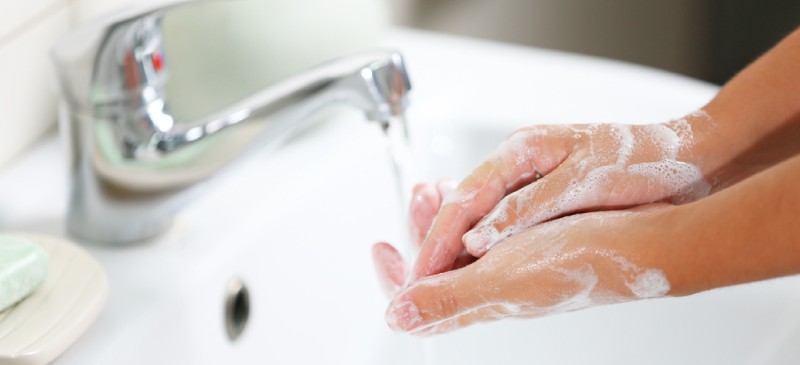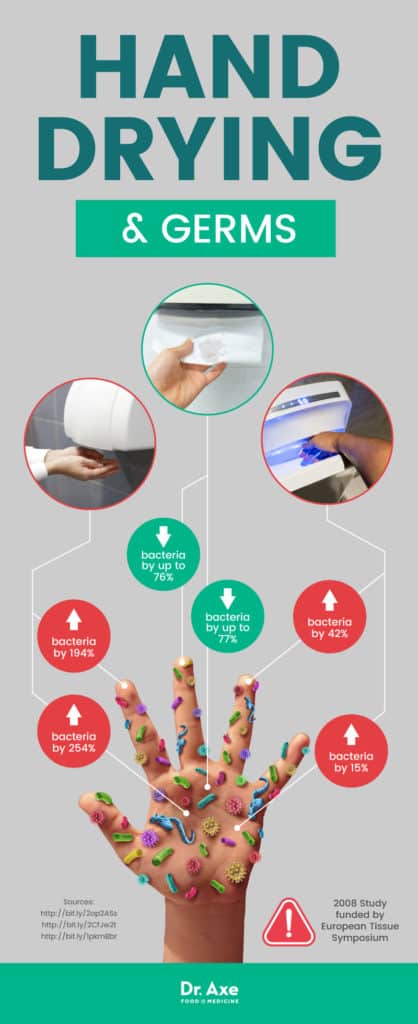This Dr. Axe content is medically reviewed or fact checked to ensure factually accurate information.
With strict editorial sourcing guidelines, we only link to academic research institutions, reputable media sites and, when research is available, medically peer-reviewed studies. Note that the numbers in parentheses (1, 2, etc.) are clickable links to these studies.
The information in our articles is NOT intended to replace a one-on-one relationship with a qualified health care professional and is not intended as medical advice.
This article is based on scientific evidence, written by experts and fact checked by our trained editorial staff. Note that the numbers in parentheses (1, 2, etc.) are clickable links to medically peer-reviewed studies.
Our team includes licensed nutritionists and dietitians, certified health education specialists, as well as certified strength and conditioning specialists, personal trainers and corrective exercise specialists. Our team aims to be not only thorough with its research, but also objective and unbiased.
The information in our articles is NOT intended to replace a one-on-one relationship with a qualified health care professional and is not intended as medical advice.
8 Hand-Washing Mistakes You’re Probably Making (& How to Wash Your Hands Properly)
February 26, 2018

When one woman’s gross hand dryer experiment went viral on Facebook, it got me thinking of the most effective ways to keep our hands clean. I’m sure you’ve never wondered about how to wash your hands; it seems instinctual, but a person’s typical hand-washing routine typically includes a number of pitfalls.
How you wash your hands could mean the difference between flu prevention and catching the dreaded virus. Like I always say, the best flu natural remedy is avoiding the illness altogether. So here’s how to practice correct hand washing to truly keep germs at bay. Bonus? No toxic chemicals required.
How Does Hand Washing Even Work?
While we wash our hands every single day, multiple times a day (or at least I hope you do!), the science of hand-washing probably isn’t at the forefront of your mind. The purpose of washing hands is to rid the hands of pathogens, including disease-causing bacteria and viruses.
Hand washing is said to help minimize the spread of influenza, prevent diarrhea and respiratory infections and more. The benefits of hand washing are so great that Geert Cappelaere, a UNICEF Representative in Sudan, said, “turning ‘handwashing’ with soap before eating and after using the toilet into an ingrained habit could save more lives than any single vaccine or medical intervention, cutting deaths from diarrhea by almost half and deaths from acute respiratory infections by one-quarter.” (1)
The effectiveness of your hand-washing depends on whether you use soap, what type of soap you use, the temperature of your water, how long you scrub your hands, how vigorously you scrub your hands and how you dry your hands. Ready to learn about the best science-backed ways to practice hand washing? (And how to avoid the biggest hand-washing mistakes?)Let’s go!
Top 8 Hand-Washing Mistakes
Thought you knew how to wash your hands? Turns out you may be making some seriously common mistakes, leaving your hands more germ-laden than before you picked up that bar of soap. Here are some common hand-washing pitfalls (and how to avoid them).
1. You’re using antibacterial soap.
Some antibacterial chemicals are a sham. According to the U.S. Food and Drug Administration (FDA), there isn’t sufficient evidence to conclude antibacterial soaps better prevent illness than washing with plain soap and water. Nonetheless, many families mistakenly reach for these soaps in an attempt to keep their families safe. These products are no more effective than regular soap. Worse yet, the use of these antibacterial products over a long period of time is linked tonegative effects. (2)
The FDA has taken some action against ingredients in antibiotic soaps. In September 2016, it banned triclosan and 18 other antibacterial soap ingredients. While this was a necessary and promising decision, not all of the ingredients left in antibacterial soap are innocent. Antibacterial chemicals, including benzalkonium chloride, benzethonium chloride and chloroxylenol, are still allowed in over-the-counter soaps.
Benzethonium
According to Environmental Working Group’s Skin Deep Database, benzethonium chloride poses low health hazards; however, the site points out a large data gap: There’s not enough research to deem it either safe or dangerous. We just don’t know. (3)
Benzalkonium Chloride
Benzalkonium chloride is linked to allergy problems in humans, including severe skin, eye and respiratory irritation, posing a moderate risk. (4)
Chloroxylenol
Chloroxylenol also poses a risk for skin, eye and lung irritation. (5) Not to mention antibiotic ingredients commonly used in soap contribute to antibiotic resistance. The more we expose germs to germ-fighting chemicals, the better they adapt and outsmart us.
So what should you use instead? My personal preference is castile soap. Castile soap is made from oils such as coconut, olive and hemp oils. It can also be made with avocado, almond and walnut oils. Free of chemicals and vegan, castile soap is made with pure ingredients I trust. When possible, opt for an organic, fair trade brand.

2. You’re using bar soap.
Pathogenic organisms may hide out on bar soap during and after use. (6) Research, while limited, suggests this bacteria is unlikely to transfer to your hands during use. (7) Elaine L. Larson, PhD, associate dean for research and professor of epidemiology in nursing at Columbia University’s Mailman School of Public Health, explains: (8)
Bacteria lives quite happily in the ‘slime’ of bar soap, but doing a few simple things (which you probably do already) will make it so the germs are of no consequence to you. Rinse off the bar in running water before lathering up to wash away the germy goop. And always store soap out of water (i.e., not in a wet bathtub), allowing it to dry between uses. That way, there’s no moist environment for germs to flock to in the first place … If you’re washing for long enough, the germs originally sitting on the bar will most likely wash off, too.
Despite this, the Center for Disease Control and Prevention (CDC) recommends sticking with liquid soap just to be safe. (Just make sure it doesn’t list antibacterial chemicals on the ingredients list.)
3. You’re using a refilled dispenser.
Researchers found that soap dispensers refilled from a large bottle of liquid soap in public restrooms caused a 26-fold increase in bacteria levels in hand washers. (9) On the other hand, not all refillable dispensers are problematic. Soap dispensers replaced with a sealed refill decreased bacteria in the same study. You may want to travel with your own little bottle of castile soap since antibacterial ingredients are common in public places.
4. Your temperature is off.
You don’t need hot water to kill germs, research says. (10) A study published in the Journal of Food Protection found no significant difference in the effectiveness of cleaning when using water at 60, 79 or 100 degrees Fahrenheit. So while it’s not necessarily negative to use warm or hot water to clean your hands, it does increase your likelihood of skin irritation and have a greater effect on climate change. So do your skin and Earth a favor, and turn down the heat.
5. You always choose the hand dryer.
It happens to everyone … The moment right after you wash your hands in a public restroom and face a surprisingly tough choice: paper towels or the hand dryer? When comparing the two for cleanliness, paper towels are the clear winner. A 2005 study found that using paper towels decreased 24 percent of bacteria while warm air dryers increased bacteria by 12 percent. (11)
A 2008 study conducted by the University of Westminster, London, found even more staggering results. Warm-air dryers increased bacteria on the finger pads by 194 percent and on the palms by 254 percent. Drying with a jet-air dryer increased bacteria on the finger pads by 42 percent and on the palms by 15 percent. Drying with paper towel reduced bacteria on the finger pads by up to 76 percent on average and on the palms by up to 77 percent on average. (12) These results, however, should be viewed skeptically as the study was sponsored by the European Tissue Symposium.
Always choose the hand dryer? You’re not alone. Hand dryers have become the popular option in recent years because of environmental consciousness. Some may be surprised to hear that the eco-friendliness of these dryers depends on what kind you’re using.
Standard warm air dryers are actually more harmful to the environment than 100 percent recycled paper towels and cotton roll towels. Standard warm air dryers manufactured from 100 percent virgin content tested almost equally in environmental impact when compared to standard warm air dryers. However, the more recent version of the standard hand dryers, jet dryers, had the least environmental impact by far when tested. (13)
To reduce your environmental impact when using paper towels, reach for one towel every time you wash your hands in a public restroom. I promise you don’t need four. Joe Smith explains how to do this in his TED Talk, “How to use one paper towel.” The magic steps?
- Shake off your hands 12 times.
- Fold your paper towel in half before drying.
- That’s all there is to it!
6. You’re rushing it.
On average, people wash their hands for 6 seconds … which is pretty far off from what they should be (less than half the time, in fact!). (14) While one study found that scrubbing your hands for 10 seconds was equally as effective as scrubbing for longer periods of time, the CDC recommends washing your hands for at least 20 seconds. If you need a way to time it, sing the “Happy Birthday” song from beginning to end twice. While it may seem childish to hum a song to yourself in the bathroom, it works, and it’s accurate! (2, 15)
7. Your lathering skills are lackluster.
While it’s important to take the time to lather, it’s also important to lather correctly. These 20 seconds shouldn’t be spent swishing soap bubbles around your hands. You should really be scrubbing. The friction created by your hands rubbing together helps lift the dirt and microbes from your skin. Don’t miss the hard-to-reach places like in between your fingers and on the back of your hands … even underneath your nails. You’ll never believe what hides out under there!
8. You skip it in lieu of hand sanitizer.
Choosing hand sanitizer should be a last resort … like if you don’t have access to running water and soap. Hand sanitizer can kill germs, but alcohol-based sanitizers must contain a minimum of 60 percent alcohol to be considered efficient. (16) Alcohol-free hand sanitizers’ effectiveness depends on each unique formulation.
When purchasing hand sanitizer, steer clear of hand sanitizers containing synthetic scents. You can find hand sanitizers fragranced with essential oils at many health food stores. If you want to be 100 percent certain about the ingredients in your hand sanitizer, you can even make your own homemade hand sanitizer using antibacterial essential oils.
Final Thoughts on How to Wash Your Hands
- Forget about antibacterial soaps and hot water. Opt for liquid soaps; I personally choose castile soap.
- When faced with the decision between a hand dryer and paper towels, choose paper towels — but shake your hands twelve times before reaching for the towel and fold it in half before drying. You only really need one.
- Lather your hands for 20 seconds before rinsing them off.
- If you must use hand sanitizer, choose one with a minimum of 60 percent alcohol and that’s unfragranced, or fragranced with essential oils. The best choice of all: make your own homemade hand sanitizer for situations where you’ll be without soap and water.











